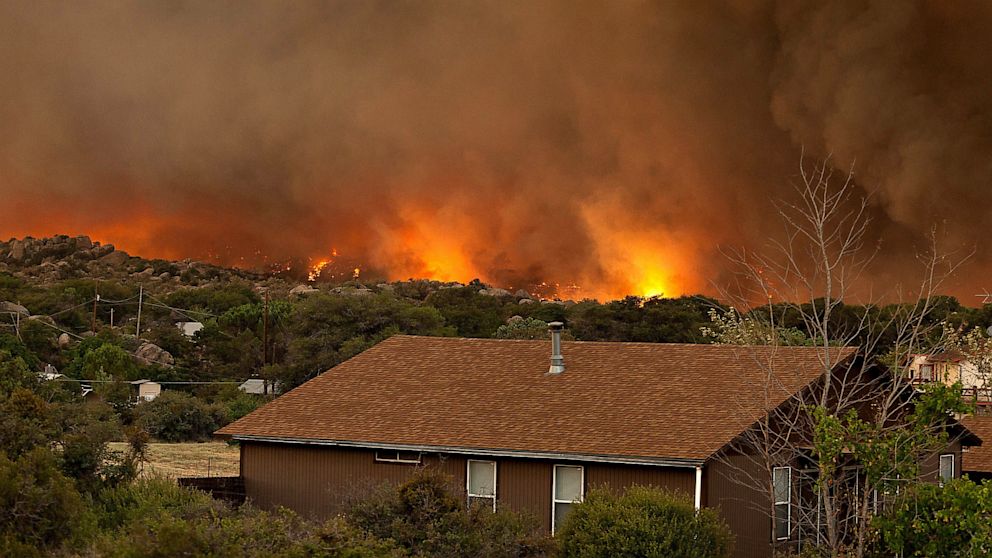19 Firefighters Dead in Ariz. Blaze, Official Says


Gusty, hot winds blew an Arizona blaze out of control Sunday in a forest northwest of Phoenix, overtaking and killing 19 members of an elite fire crew in the deadliest wildfire involving firefighters in the U.S. for at least 30 years.
The "hotshot" firefighters were forced to deploy their emergency fire shelters — tent-like structures meant to shield firefighters from flames and heat — when they were caught near the central Arizona town of Yarnell, state forestry spokesman Art Morrison told The Associated Press.
The fire also destroyed an estimated 200 homes, Morrison said. Dry grass near the communities of Yarnell and Glen Isla fed the fast-moving blaze, which was whipped up by wind and raced through the homes, he said.
The fire still burned late Sunday, with flames lighting up the night sky in the forest above Yarnell, a town of about 700 residents about 85 miles northwest of Phoenix. Most people had evacuated from the town, and no injuries or other deaths were reported.
The fire started after a lightning strike on Friday and spread to at least 2,000 acres on Sunday amid triple-digit temperatures, low humidity and windy conditions.
Prescott Fire Chief Dan Fraijo said that the 19 dead firefighters were a part of the city's fire department.
"We grieve for the family. We grieve for the department. We grieve for the city," he said at a news conference Sunday evening. "We're devastated. We just lost 19 of the finest people you'll ever meet."
Hot shot crews are elite firefighters who often hike for miles into the wilderness with chain saws and backpacks filled with heavy gear to build lines of protection between people and fires. They remove brush, trees and anything that might burn in the direction of homes and cities.
The crew killed in the blaze had worked other wildfires in recent weeks in New Mexico and Arizona, Fraijo said.
"By the time they got there, it was moving very quickly," he told the AP of Sunday's fire.
He added that the firefighters had to deploy the emergency shelters when "something drastic" occurred.
"One of the last fail safe methods that a firefighter can do under those conditions is literally to dig as much as they can down and cover themselves with a protective — kinda looks like a foil type — fire-resistant material — with the desire, the hope at least, is that the fire will burn over the top of them and they can survive it," Fraijo said.
"Under certain conditions there's usually only sometimes a 50 percent chance that they survive," he said. "It's an extreme measure that's taken under the absolute worst conditions."
The National Fire Protection Association had previously listed the deadliest wildland fire involving firefighters as the 1994 Storm King Fire near Glenwood Springs, Colo., which killed 14 firefighters who were overtaken by a sudden explosion of flames.
U.S. wildfire disasters date back more than two centuries and include tragedies like the 1949 Mann Gulch fire near Helena, Mont., that killed 13, or the Rattlesnake blaze four years later that claimed 15 firefighters in Southern California.
President Barack Obama called the 19 firefighters heroes and
No comments:
Post a Comment